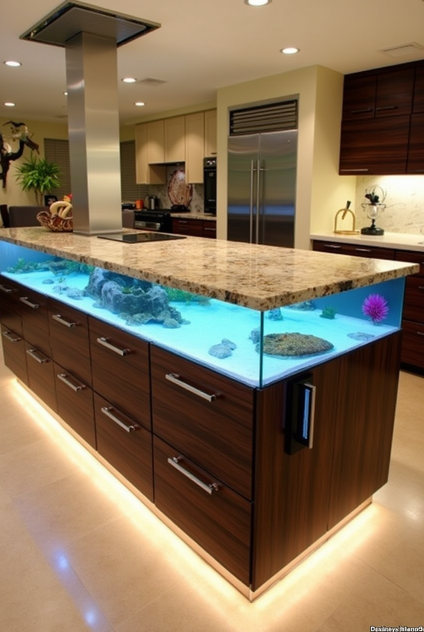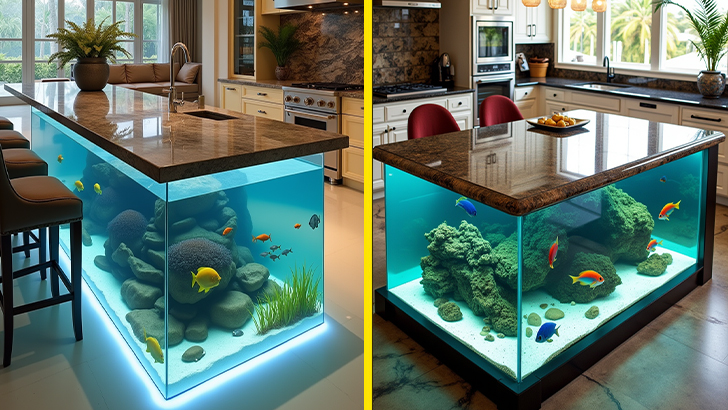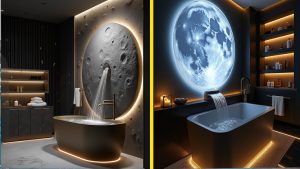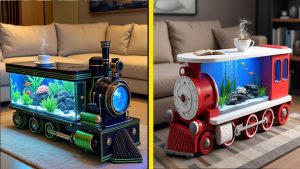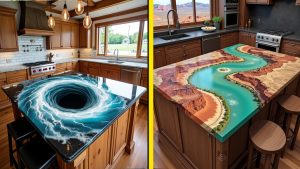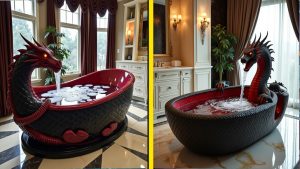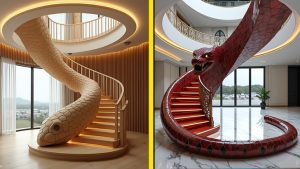In the ever-evolving world of interior design, homeowners continually seek innovative ways to infuse uniqueness and personal flair into their living spaces. One such captivating trend making waves is the integration of aquarium kitchen islands. This design marries functionality with the serene beauty of aquatic life, transforming the heart of the home into a mesmerizing focal point.
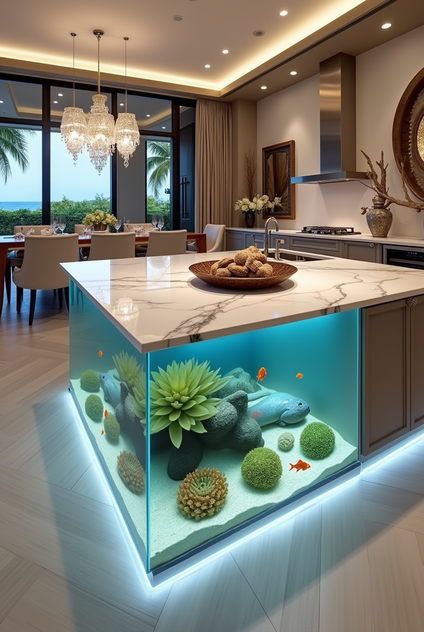
What Are Aquarium Kitchen Islands?
An aquarium kitchen island is a multifunctional kitchen centerpiece that incorporates a fully operational aquarium into its structure. This fusion not only serves as a standard kitchen island—providing additional counter space and storage—but also brings the tranquil and dynamic visuals of an underwater ecosystem into daily culinary experiences. The result is a harmonious blend of practicality and aesthetic allure, offering a unique ambiance that enlivens the kitchen environment.
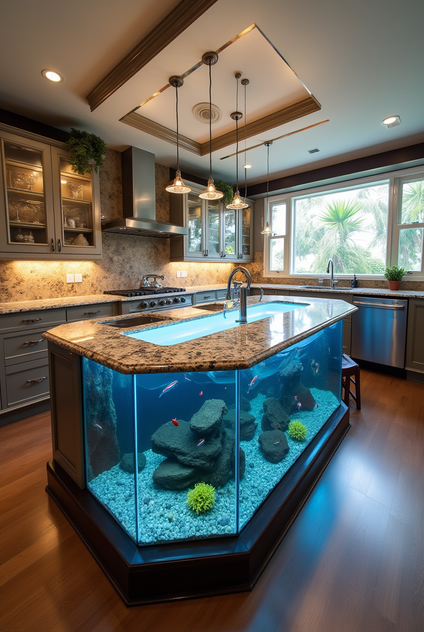
Design Considerations
Designing an aquarium kitchen island requires meticulous planning to ensure both functionality and safety. Key considerations include:
Structural Support: The combined weight of the aquarium, water, substrate, and aquatic life necessitates a robust support system. Materials such as reinforced steel and high-quality wood are commonly employed to construct a frame capable of bearing substantial loads.
Materials: Opting for durable and water-resistant materials ensures longevity and ease of maintenance. Countertops made from granite or quartz are popular choices due to their resilience and aesthetic appeal.
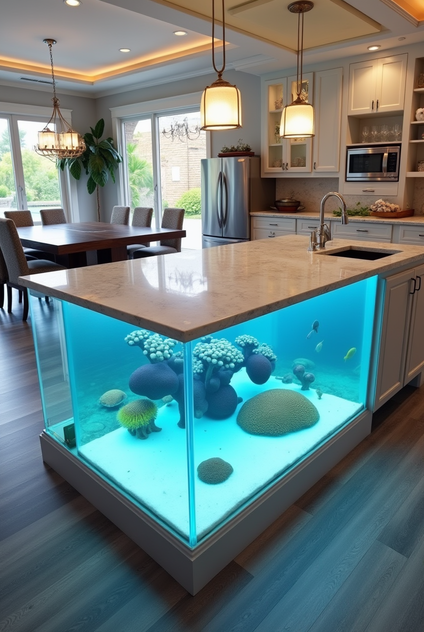
Aquarium Systems Integration: Seamlessly incorporating essential aquarium components—such as filtration systems, heaters, and lighting controls—into the island’s design is crucial. These elements can be discreetly housed within the island’s cabinetry or concealed behind false panels to maintain a clean and uncluttered appearance.
Types of Aquariums Suitable for Kitchen Islands
The choice between freshwater and saltwater aquariums significantly influences the design and maintenance requirements:
Freshwater Aquariums: Ideal for beginners, freshwater setups are generally more straightforward to maintain and offer a variety of hardy fish species. Species such as tetras, guppies, and angelfish provide vibrant colors and are well-suited for community tanks.
Saltwater Aquariums: These setups boast a diverse array of exotic marine life, including clownfish, tangs, and coral species. While offering unparalleled beauty, saltwater aquariums require more precise water parameter control and are typically more demanding in terms of maintenance.
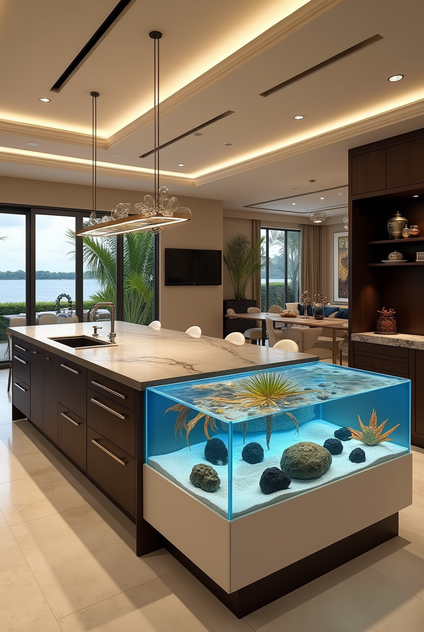
Customization Options
Aquarium kitchen islands offer a plethora of customization possibilities to align with individual tastes and kitchen aesthetics:
Design Styles: Whether aiming for a sleek, modern look with minimalist features or a rustic charm with natural wood finishes, the aquarium island can be tailored to complement the existing kitchen decor.
Countertop Materials: Choices range from transparent glass countertops, allowing an unobstructed view of the aquatic life below, to opaque surfaces like marble or granite that provide a traditional appearance while still showcasing the aquarium through side panels.
Aquascaping: The interior design of the aquarium itself can reflect personal preferences, from lush, planted freshwater landscapes to intricate coral reef replicas, creating a personalized underwater scene.
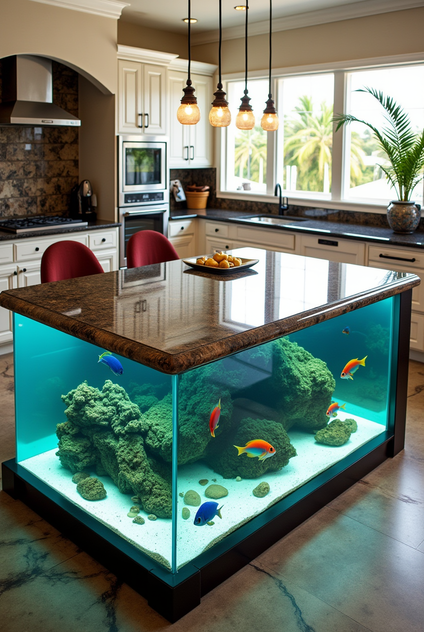
Installation Process
Implementing an aquarium kitchen island is a complex endeavor that typically involves the following steps:
Consultation and Design Planning: Engaging with architects, interior designers, and aquarium specialists to conceptualize the design, ensuring structural integrity and aesthetic harmony.
Structural Preparation: Reinforcing flooring and constructing the island’s framework to support the anticipated
